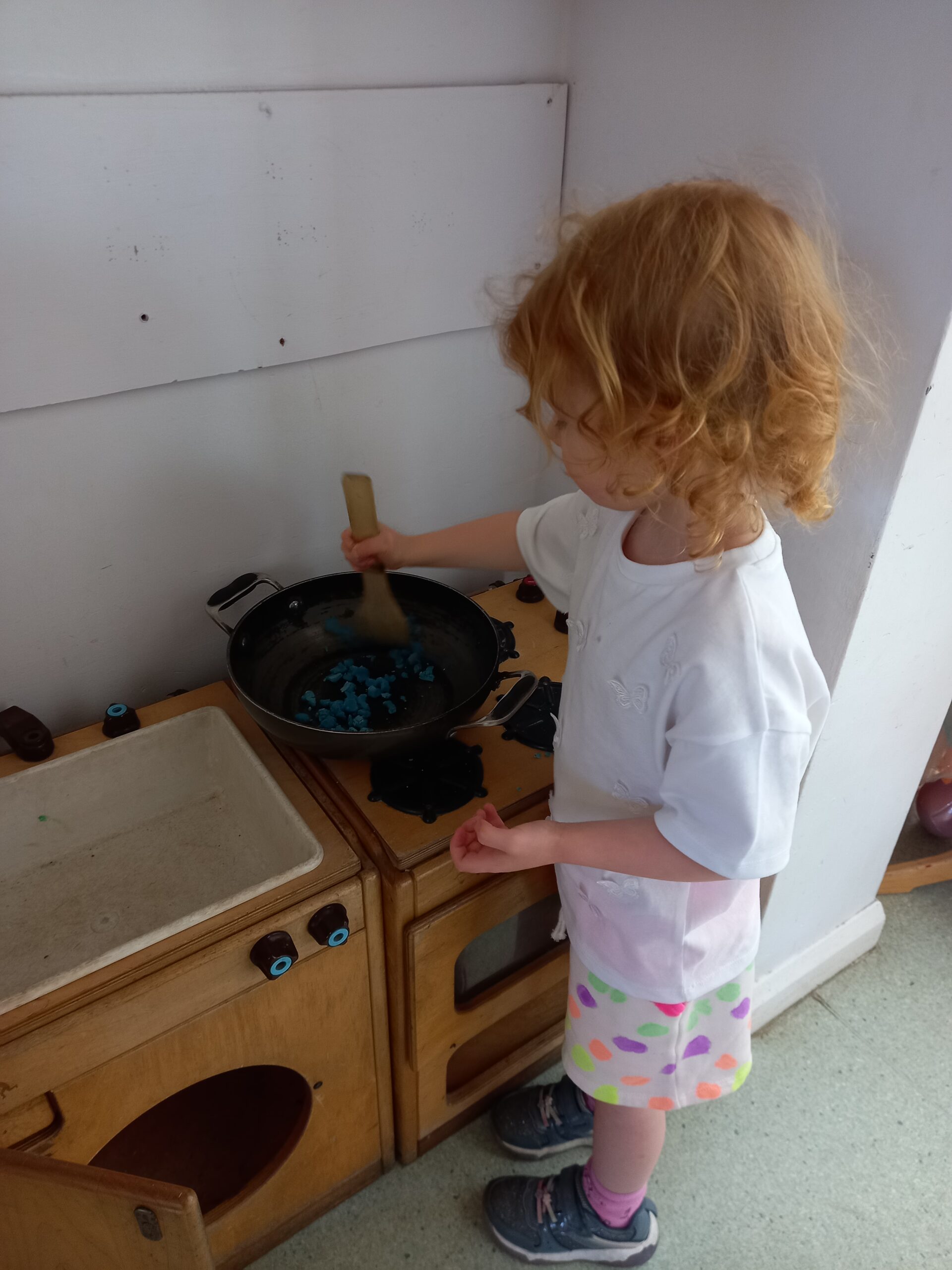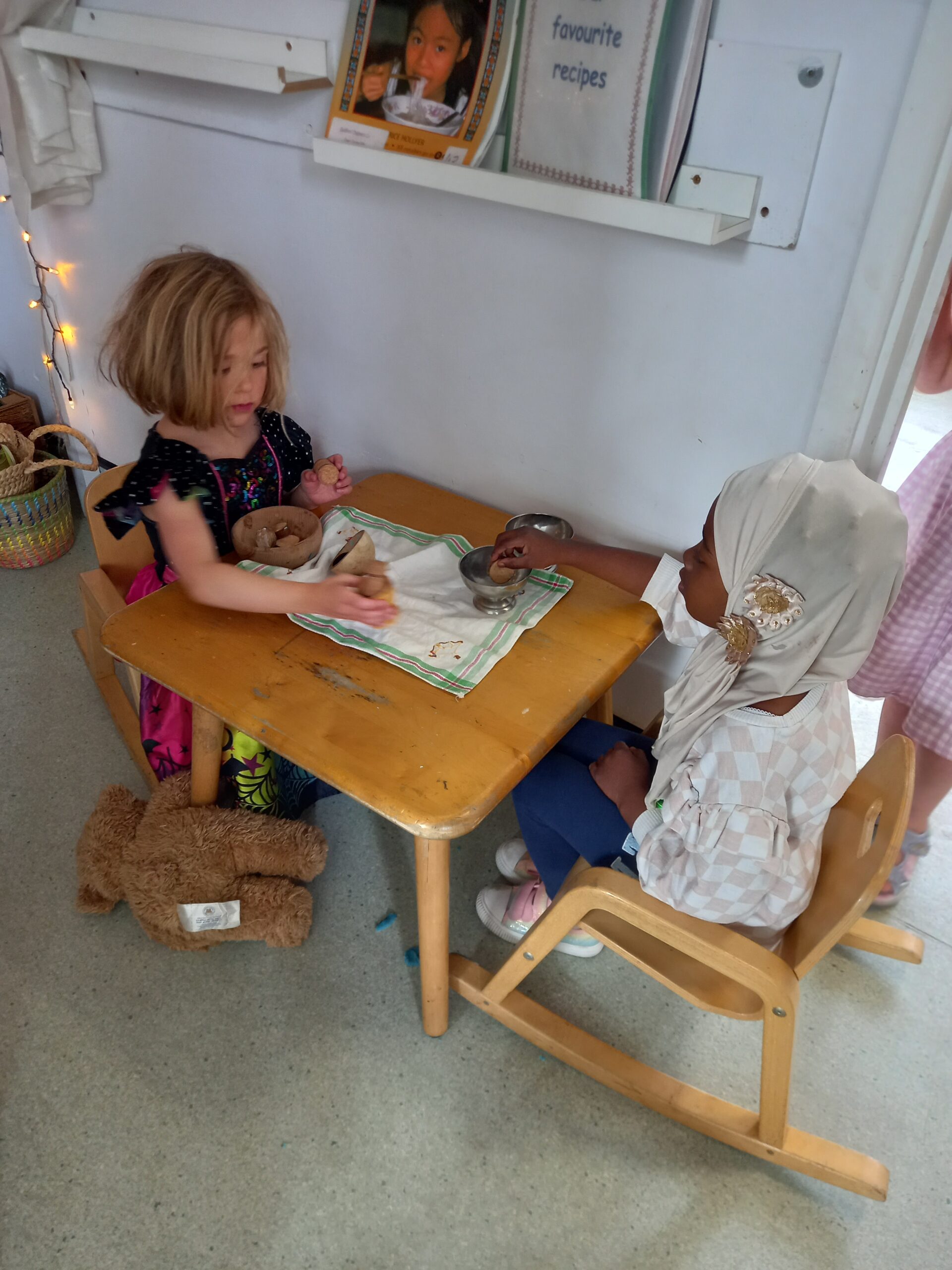Read what Froebelian expert, Rachna Joshi, has to say about pretend play in her monthly blog about aspects of Froebelian pedagogy at Guildford Nursery School.

During my time on both sites at Guildford Nursery School (GNS) in the Spring term, I noticed much more play amongst the children. They demonstrated a sense of being settled in and comfortable in their environment compared to when I observed in Autumn. The children’s interactions with the environment and their peers felt deeper and they were comfortable bringing a sense of themselves to the settings.
Conversations with Sally (headteacher of GNS) brought up topics around the changing needs of the children attending the Nursery over time. She and her team observed that many of the children who were in the Nursery needed more support in their pretend and imaginative play. They found that children were able to use literal objects to imitate but were struggling with the concept of pretending. They found that their practice needed to be adapted to model and guide children into more symbolic and pretend play.
To help address this, together with Professor Tina Bruce, they have developed a layers of play document.
Whilst presented in table format, the layers of play are not linear. They explore the different parts of play that children move through. Within the observations shared below we can see the various layers at different points throughout the episode of play. Using this as guidance helps educators to understand what they are observing when children are playing and how to support and extend them in their play.

I observed a child making soup in the domestic role play inside, he had mixed loose parts into a pot. He took a spoon and had a ‘sip’, ‘too spicy!’ he told me, and adjusted the spiciness using pretend spice pots.
Even in this short moment of play observed, you can see various layers of play. You can see the first-hand experiences or foundations of play the child has had – making soup, which is something that children are often doing at GNS, and in fact on that same day the children were making pancakes. Bruce (2021) explains that children pretend when they play and they rehearse their future in their role play. In this observation he pretends to make soup, pretends that it’s spicy, and uses resources to pretend to lower the spice level. He also rehearses his future through being someone who cooks soup- using the layers of play it is clear that he is developing literal pretend play.
Children are often re-enacting their experiences from daily life in their play. In the observation the child also uses abstract objects such as loose parts to symbolically represent his soup. As well as assigning representations to the loose parts, he assigns a role for himself that he is familiar with, perhaps being an educator in the setting making soup, or being someone from home who cooks for him, this offers another aspect of literal pretend play.
I returned to the domestic role play and saw that another group of children were playing as mummies (pretend play), however in this episode of play there was a child pretending to be a cat – this would be imaginative play. This type of imaginative play is when children pretend to be something that they couldn’t be in real life.
During this play episode, the ‘Mummy’ told me that the ‘cat’ had put the baby in the toilet and had flooded the toilet. Again, this observation demonstrates different types of play too which left me assuming that some of these experiences were based on real life – perhaps blocked toilets, and some cheeky cats!

The resources available for children were open ended – the child used loose parts for food to help them with their pretend play. And the loose parts have wider affordances which can stand for anything and therefore different children will apply their symbolic representations onto these items.
For younger children who need more experience in the literal play, the adults ensure the priority is the real-life experience for children to then take their play to the symbolic level.

The children also have a dance session each week. I observed how the dance teacher runs her sessions and she cleverly introduced a story which required the children to walk, hop, jump around the room. Even though this was a guided session the children had the opportunity to pretend with the adult guiding them through their story. Whilst this wouldn’t be considered play – as Bruce (2021) discusses how children hold the control and play agenda and this situation was led by the adult however, it was still an opportunity to pretend alongside an adult. It was another way of providing the foundations of play.
Exploring play and trying to navigate and understand play is complicated. Various researchers have spent time trying to define it (Else, 2014). It is challenging to do so, but there are common features that Bruce (2021) describes that can be seen in settings every day. Our role as educators is to observe and understand what we have observed. Our interpretation and analysis (sometimes done in the moment, or over time) helps us to determine how to support and extend children’s learning and development.
References
Bruce, T. (2021). Friedrich Froebel: A critical introduction to key themes and debates. Bloomsbury.
Else, P. (2014). Making sense of Play. McGraw Hill Education.




